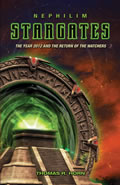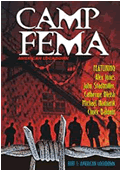PART 16
By Thomas R. Horn
March 27, 2013
NewsWithViews.com
During
his life, Sir Arthur C. Clarke (1917–2008) was a famous science-fiction
author, inventor, futurist, and television commentator who, together
with 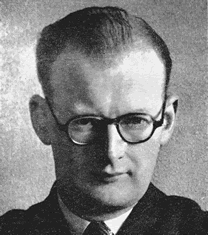 Robert
A. Heinlein and Isaac Asimov, was considered to be one of the “Big
Three” of science fiction.
Robert
A. Heinlein and Isaac Asimov, was considered to be one of the “Big
Three” of science fiction.
Clarke in particular had an uncanny knack at foreseeing the future. As an example, modern video games were unheard of in 1956 and virtual reality games had not even been imagined. That is, until Clarke wrote about them in The City and the Stars:
Of all the thousands of forms of recreation in the city, these were the most popular. When you entered a saga, you were not merely a passive observer.… You were an active participant and possessed—or seemed to possess—free will. The events and scenes which were the raw material of your adventures might have been prepared beforehand by forgotten artists, but there was enough flexibility to allow for wide variation. You could go into these phantom worlds with your friends, seeking the excitement that did not exist in Diaspar—and as long as the dream lasted there was no way in which it could be distinguished from reality.[i]
Or who could have believed in 1968 that the “newspad” technology set in 2001 would be realized nine years late as the iPad in 2010? Yet Clarke in his novel, 2001: A Space Odyssey, clearly described the technology:
When he tired of official reports and memoranda and minutes, he would plug his foolscap-sized Newspad into the ship’s information circuit and scan the latest reports from Earth. One by one he would conjure up the world’s major electronic papers; he knew the codes of the more important ones by heart, and had no need to consult the list on the back of his pad. Switching to the display unit’s short-term memory, he would hold the front page while he quickly searched the headlines and noted the items that interested him.[ii]
Unfortunately, that Clarke showed such remarkable prescience may hold important (and frightening) realities for our investigation, too. This is because in the sci-fi seer’s classic, Childhood’s End (1953), giant silver spaceships appear in the future over every major city on Earth. After the dust settles, the peaceful yet mysterious “Overlords” inside them help form a world government, which ends all war and turns the planet into a utopia. Oddly, only a select few people get to see the Overlords, and their purpose for coming to Earth remains shrouded as they dodge questions for years, preferring to remain in their spacecraft, governing by proxy. Overlord Karellen, the “Supervisor for Earth,” (an alien god) speaks directly only to the UN Secretary-General. Karellen tells him that the Overlords will reveal themselves in fifty years, when humanity will have become used to (and dependent on) their presence. When the revealing finally takes place, at Karellen’s request, two children run into the ship as the crowd below finally gets a glimpse of what the aliens look like. Clarke writes:
There was no mistake. The leathery wings, the little horns, the barbed tail—all were there. The most terrible of all legends had come to life, out of the unknown past. Yet now it stood smiling, in ebon majesty, with the sunlight gleaming upon its tremendous body, and with a human child resting trustfully on either arm.[iii]
According
to the narrative, the revelation that these beings—historically
known as the devil and his angels—were in fact always our benefactors
and 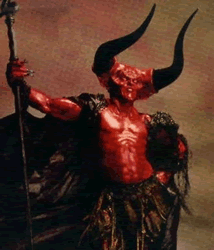 saviors
does not lead to chaos but rather to technological and spiritual utopia,
quickly resulting in the dissolution of all previously existing religions.
The world celebrates as people are described as having overcome their
prejudices against the devilish sight of Karellen, or, as he had been
known in the Bible, Satan.
saviors
does not lead to chaos but rather to technological and spiritual utopia,
quickly resulting in the dissolution of all previously existing religions.
The world celebrates as people are described as having overcome their
prejudices against the devilish sight of Karellen, or, as he had been
known in the Bible, Satan.
Here was a revelation which no-one could doubt or deny: here, seen by some unknown magic of Overlord science, were the true beginnings of all the world’s great faiths. Most of them were noble and inspiring—but that was not enough. Within a few days, all mankind’s multitudinous messiahs had lost their divinity. Beneath the fierce and passionless light of truth, faiths that had sustained millions for twice a thousand years vanished like morning dew.[iv]
As the story continues, the children on Earth—set free from outdated Abrahamic religions such as Christianity—begin displaying powerful psychic abilities, foreshadowing their evolution into a cosmic consciousness, a transcendent form of life. Indeed, this is the end of the human species as it was known as everyone merges into a cosmic intelligence called the Overmind.
Those familiar with eastern religions will recognize Clarke’s narrative as a clever ET version of pantheistic monism (the view that there is only one kind of ultimate substance). Overmind is quite similar to the Hindu concept of Brahman, and given that Atman is, simply stated, the concept of self, the Hindu doctrine “Atman is Brahman” is roughly equivalent to absorption into the Overmind. Similarly, Buddhism advocates the dissolution of the self into Nirvana. In fact, nearly all New Age, spiritualist, and occult traditions have comparable monistic dogma. Some shroud this doctrine of deceit in terms like “Christ Consciousness,” giving it a more appealing veneer, but Jacques Vallée recorded interesting examples of such twisted ET theology, replacing biblical prophecy with the Overmind. One contactee told Vallée:
I was told that I was to come out at this time with this information because mankind was going to go through the collective Christ experience of worshipping UFOs and receiving information. It would help mankind balance its political focus. You see the interesting thing, Jacques, is that we must emphasize the fact that we are receiving a new program! We do not have to go through the old programming of Armageddon. [v]
That such New-Age babble as described above has been the doctrine of non-Christians this century is one thing, but in recent homilies, Pope Benedict XVI’s end-times views took on a troubling and similar preparatory tome. This may not come as a surprise to those Catholics familiar with Father Malachi Martin’s warnings in his book, The Jesuits, which documented how priests like Pierre Teilhard de Chardin were deeply influencing the Church and its academia toward occultism this century. In our chapter on “Exotheology” in the new book Exo-Vaticana we establish Chardin’s belief in extraterrestrials and offer a brief discussion on his sorcerous Darwinian mysticism. But it was his connection with monistic occultism and what is called the “Omega Point” that takes us through the alien-deity rabbit hole. According to Chardin, in his The Future of Man (1950), the universe is currently evolving towards higher levels of material complexity and consciousness and ultimately will reach its goal, the Omega Point. Chardin postulated that this is the supreme aspiration of complexity and consciousness, an idea also roughly equivalent to the “Technological Singularity” as expressed in the writings of transhumanists like Ray Kurzweil. Indeed, one finds a remarkable coalescence of all non-Christian systems under the banner of Singularity, Monism, Omega Point, and Overmind. Yet, like the nebulous “Christ consciousness” advocated by occultists, Chardin’s writings are easily misunderstood because he not only created new vocabulary for his Darwinian religion, he also redefined biblical terminology to mean something alien to its original intent. For instance, when Chardin writes about “Christ,” he usually does not mean Jesus of Nazareth. Instead, he is describing the Ultra-Man, the all-encompassing end of evolution at the Omega Point. As an example, consider when Jesus said, “Think not that I am come to destroy the law, or the prophets: I am not come to destroy, but to fulfill” (Matthew 5:17). Chardin exegetes this as, “I have not come to destroy, but to fulfill Evolution.”[vi] To most Christians, this probably seems overtly heretical, but its infiltration into Roman Catholic thought and the dangerous alien-christ implications it brings with it has infiltrated the highest levels at Rome—including the papacy.
Unbeknownst
to most Roman Catholics, the retired Pope Benedict XVI is a Chardinian
mystic of the highest order. His book, Credo for Today: What Christians
Believe (2009), follows the lead of the Jesuit and states 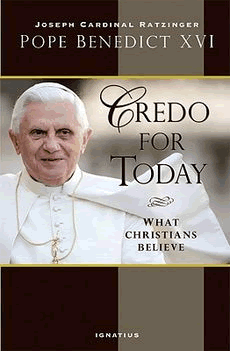 unequivocally
that a belief in Creationism (the idea that life, the Earth, and the
universe as we know it today did not “evolve” but rather
were created by the God of the Bible) “contradicts the idea
of evolution and [is] untenable today.”[vii] Following his rejection
of Creationism and support of evolution, Pope Benedict XVI employed
the doctrine of the Second Coming of Christ to advance Chardin’s
“Omega Point,” in which a “new kind” of God,
man, and mind will emerge. From page 113 we read:
unequivocally
that a belief in Creationism (the idea that life, the Earth, and the
universe as we know it today did not “evolve” but rather
were created by the God of the Bible) “contradicts the idea
of evolution and [is] untenable today.”[vii] Following his rejection
of Creationism and support of evolution, Pope Benedict XVI employed
the doctrine of the Second Coming of Christ to advance Chardin’s
“Omega Point,” in which a “new kind” of God,
man, and mind will emerge. From page 113 we read:
From this perspective the belief in the second coming of Jesus Christ and in the consummation of the world in that event could be explained as the conviction that our history is advancing to an “omega” point, at which it will become finally and unmistakably clear that the element of stability that seems to us to be the supporting ground of reality, so to speak, is not mere unconscious matter; that, on the contrary, the real, firm ground is mind. Mind holds being together, gives it reality, indeed is reality: it is not from below but from above that being receives its capacity to subsist. That there is such a thing as this process of ‘complexification’ of material being through spirit, and from the latter its concentration into a new kind of unity can already be seen in the remodeling of the world through technology.[viii]
The term “complexification’ was coined by Chardin (and the technological allusions it suggests is akin to transhumanism and Ray Kurzweil’s Singularity) and the pope’s complete devotion to this theology is again laid bare in his book, Principles of Catholic Theology (1987), which states:
The impetus given by Teilhard de Chardin exerted a wide influence. With daring vision it incorporated the historical movement of Christianity into the great cosmic process of evolution from Alpha to Omega: since the noogenesis, since the formation of consciousness in the event by which man became man, this process of evolution has continued to unfold as the building of the noosphere above the biosphere.[ix]
This “noosphere” is taken very seriously today in modernist Catholic theology, academia, and even science. It is explained in the scientific journal, Encyclopedia of Paleontology, this way:
Teilhard coined the concept of the “noosphere,” the new “thinking layer” or membrane on the Earth’s surface, superposed on the living layer (biosphere) and the lifeless layer of inorganic matter (lithosphere). Obeying the “law of complexification/conscience,” the entire universe undergoes a process of “convergent integration” and tends to a final state of concentration, the “point Omega” where the noosphere will be intensely unified and will have achieved a “hyperpersonal” organization. Teilhard equates this future hyperpersonal psychological organization with an emergent divinity [a future new form of God].[x]
The newly sanctioned doctrine of an approaching “emergent divinity” in place of the literal return of Jesus Christ isn’t even that much of a secret any longer among Catholic priests (though the cryptic Charindian lingo masks it from the uninitiated). For instance, in his July 24, 2009, homily in the Cathedral of Aosta while commenting on Romans 12:1–2, the pope said:
The role of the priesthood is to consecrate the world so that it may become a living host, a liturgy: so that the liturgy may not be something alongside the reality of the world, but that the world itself shall become a living host, a liturgy. This is also the great vision of Teilhard de Chardin: in the end we shall achieve a true cosmic liturgy, where the cosmos becomes a living host. [xi]
This is overtly pantheistic and, of course, the text he was discussing (Romans 12) teaches the exact opposite: “Be not conformed to this world” (Romans 12:2a). While the pope thus aggressively promotes Chardin’s process of “noogenesis” in which the cosmos comes alive and everyone unifies as a “living host,” one can readily see that Brahman, Nirvana, Overmind, and Singularity are roughly equivalent to this monistic concept. Interestingly, noogenesis (Greek: voû§=mind; =becoming) actually has two uses: one in Chardin’s Darwinian pantheism—and another, more telling rendering—within modern astrobiology.
In
Cardin’s system, noogenesis is the fourth of five stages of
evolution, representing the emergence and evolution of mind. This
is the stage we are said to be in currently, and as noogenesis progresses,
so does the formation of the noosphere, which is the collective sphere
of human thought. In fact, many Chardinians believe that the World
Wide Web is an infrastructure of 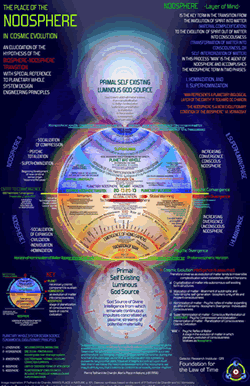 noosphere,
an idea intersecting well with transhumanist thought. Chardin wrote,
“We have as yet no idea of the possible magnitude of ‘noospheric’
effects. We are confronted with human vibrations resounding by the
million––a whole layer of consciousness exerting simultaneous
pressure upon the future and the collected and hoarded produce of
a million years of thought.”[xii]
noosphere,
an idea intersecting well with transhumanist thought. Chardin wrote,
“We have as yet no idea of the possible magnitude of ‘noospheric’
effects. We are confronted with human vibrations resounding by the
million––a whole layer of consciousness exerting simultaneous
pressure upon the future and the collected and hoarded produce of
a million years of thought.”[xii]
However, this concept gets more translucent in astrobiology, where scientists have adopted noogenesis as the scientific term denoting the origin of technological civilizations capable of communicating with humans and traveling to Earth—in other words, the basis for extraterrestrial contact.[xiii] Consequently, among many if not most of Rome’s astronomers and theologians, there is the widespread belief that the arrival of “alien deities” will promote our long-sought spiritual noogenesis, and according to a leading social psychologist, the world’s masses are ready for such a visitation and will receive them (or him) as a messiah.[xiv] This is further reflected in a 2012 United Kingdom poll, which indicated that more people nowadays believe in extraterrestrials than in God.[xv] Consequently, whether or not it is the ultimate expression, the noogenic “strong delusion” is already here.
While we aren’t suggesting a direct equivocation per se, the conceptual intersection between the two uses of noogenesis (the occultic and astrobiological) is thought provoking, especially in light of Clarke’s scenario in Childhood’s End, where noogenesis in the astrobiological application (the arrival of the alien Overlords) was the impetus for evolution toward the Overmind and dissolution of humanity. It seems Rome has connected these dots for us. In his sanctioned treatise, Kenneth J. Delano linked the concept of maximum consciousness and alien contact, truly noogenesis in both senses of the word:
For man to take his proper place as a citizen of the universe, he must transcend the narrow-mindedness of his earthly provincialism and be prepared to graciously accept the inhabitants of other worlds as equals or even superiors. At this point in human history, our expansion into space is the necessary means by which we are to develop our intellectual faculties to the utmost and, perhaps in cooperation with ETI, achieve the maximum consciousness of which St. Thomas Aquinas wrote in Summa Theologica:
This is the earthly goal of man: to evolve his intellectual powers to their fullest, to arrive at the maximum of consciousness, to open the eyes of his understanding upon all things so that upon the tablet of his soul the order of the whole universe and all its parts may be enrolled.[xvi]
Viewed through this lens, the Vatican’s promotion of Darwinism and astrobiology intrigues. Following Chardin and Delano, perhaps Pope Benedict, the VORG astronomers, and theologians like Tanzella-Nitti, O’Mera, and Balducci pursued astrobiological noogenesis so that when Petrus Romanus assumed his reign as the final pope, they might usher in the Fifth Element of the Omega Point known as “Christogenesis.” (Authors note: one cannot help recall the movie The Fifth Element that involved a priesthood who protects a mysterious Fifth Element that turns out to be a messianic human who ultimately combines the power of the other four elements [noogenesis] to form a “divine light” that saves mankind.)
| Subscribe to the NewsWithViews Daily News Alerts! |
In Chardin’s book, The Phenomenon of Man, the five elements of evolution are: 1) “geogenesis” (beginning of Earth); 2) “biogenesis” (beginning of life); 3) “anthropogenesis” (beginning of humanity); 4) noogenesis (evolutionary consolidation to maximum consciousness); leading to finally 5) “Christogenesis,” the creation of a “total Christ” at the Omega Point. With that in mind, be aware that astrobiology and transhumanist philosophy suggest this noogenesis is being driven by an external intelligence, whether it be respectively artificial or extraterrestrial, which leads these authors to conclude we are on the cusp of a noogenesis unlike the one Rome’s theologians may have anticipated. We would redefine the terms and instead suggest aggressive preparation for an Antichristogenesis––an Alien
Serpent-Savior––the ultimate Darwinian Übermensch who may even bare leathery wings, little horns, and a barbed tail. But regardless how he appears, it will be frighteningly obvious to all readers of Exo-Vaticana that the Vatican has cleverly prepared for his coming, even now monitoring his approach from atop Mt. Graham, using the LUCIFER device.
Click here for part -----> 1, 2, 3, 4, 5, 6, 7, 8, 9, 10, 11, 12, 13, 14, 15, 16, 17,
© 2013 Thomas Horn - All Rights Reserved
Thomas Horn is the CEO of RaidersNewsUpdate.com and SurvivorMall.com.
Over the last decade, he has authored three books, wrote dozens of published editorials, and had several feature magazine articles. In addition to past articles at NewsWithViews.com , his works have been referred to by writers of the LA Times Syndicate, MSNBC, Christianity Today, Coast to Coast, World Net Daily, White House Correspondents and dozens of newsmagazines and press agencies around the globe. Tom's latest book is "The Ahriman Gate," which fictionalizes the use of biotechnology to resurrect Biblical Nephilim.
Thomas is also a well known radio personality who has guest-hosted and appeared on dozens of radio and television shows over the last 30 years, including "The 700 Club" and "Coast to Coast AM." When looking for a spokesperson to promote their film "Deceived" staring Louis Gossett Jr. and Judd Nelson, "Cloud 10 Pictures" selected Thomas as their spokesperson to explain the Christian viewpoint on UFO-related demonology.
Web Site: RaidersNewsUpdate.com
E-Mail: RaidersNewsUpdate@gmail.com
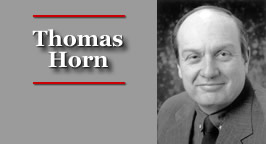
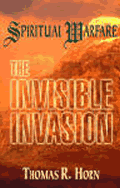
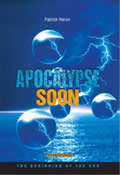
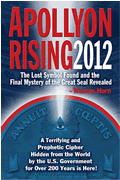








 Share
This Article
Share
This Article